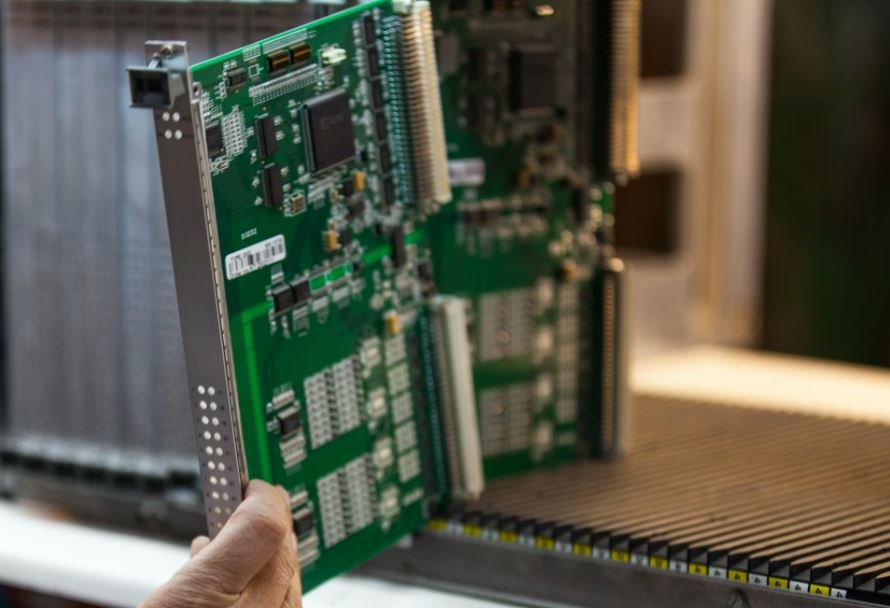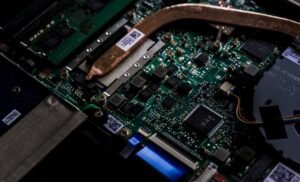Deep Learning Rig
The field of deep learning has rapidly advanced in recent years, thanks to the development of more powerful hardware and sophisticated algorithms. To harness the full potential of deep learning, researchers and practitioners often turn to specialized deep learning rigs. These rigs are specifically designed to handle the intense computational demands of training complex neural networks.
Key Takeaways
- Deep learning rigs are purpose-built systems designed for training complex neural networks.
- These rigs consist of high-performance components, such as powerful GPUs and ample memory.
- Optimizing the hardware and software of a deep learning rig helps to enhance training performance.
- Building a deep learning rig can be cost-effective in the long run for researchers and data scientists.
Components of a Deep Learning Rig
A deep learning rig typically consists of the following key components:
- Central Processing Unit (CPU): The brain of the system, responsible for overall computing tasks.
- Graphics Processing Unit (GPU): Handles parallel processing tasks, accelerating deep learning computations.
- Random Access Memory (RAM): Provides fast access to temporary data, allowing for quicker calculations.
- Storage: SSDs or HDDs for storing training data, models, and other relevant files.
- Power Supply Unit (PSU): Supplies power to all components of the rig.
- Motherboard: Connects all components and coordinates their functioning.
- Cooling System: Keeps the rig’s temperature at an optimal level to prevent overheating.
Optimizing the architecture and hardware configuration of a deep learning rig is crucial for achieving the best performance. Since deep learning involves processing large amounts of data simultaneously, choosing the right components is key to ensuring smooth operations.
Deep learning rigs are like powerful computational workhorses, enabling researchers to push the boundaries of artificial intelligence.
Deep Learning Rig vs. General-Purpose Computer
A deep learning rig differs significantly from a general-purpose computer in terms of its hardware configuration and optimization for AI tasks. Here are a few key distinctions:
| Deep Learning Rig | General-Purpose Computer | |
|---|---|---|
| GPUs | Equipped with high-powered GPUs, such as the NVIDIA Tesla series, for accelerated deep learning computations. | Usually equipped with standard GPUs, more optimized for graphical tasks rather than deep learning. |
| RAM | Special emphasis on ample RAM to accommodate large data sets and optimize model training. | RAM capacity may vary and is generally not tailored specifically for deep learning. |
| Processing Power | Designed to handle concurrent processing with multiple cores, specifically optimized for deep learning. | Processing power may vary based on the intended usage, not specifically optimized for deep learning. |
| Storage | Greater storage capacity required to store large training data sets and models. | Variable storage capacity, but generally not as extensive as in a deep learning rig. |
The optimized configuration of a deep learning rig enables researchers to train complex neural networks more efficiently compared to general-purpose computers.
Building a Deep Learning Rig
If you are considering building a deep learning rig, here are some key steps to follow:
- Determine your requirements: Assess your AI project’s needs, including the type of data, network architecture, and computational requirements.
- Select appropriate components: Choose high-performance CPUs, GPUs, and ample RAM to handle the computational workload. Consider the storage capacity and cooling system as well.
- Assemble the rig: Carefully install the components in the appropriate slots, following the manufacturer’s instructions.
- Install the operating system and deep learning framework: Opt for a Linux-based operating system and install libraries, such as TensorFlow or PyTorch, to facilitate deep learning.
- Optimize and test: Fine-tune the rig’s settings, including driver updates and performance optimizations, and ensure its stability through rigorous testing.
Building a deep learning rig offers the flexibility to customize the hardware configuration based on your specific deep learning requirements.
Deep Learning Rigs vs. Cloud Computing
While deep learning rigs offer advantages in terms of flexibility and cost-effectiveness, it’s important to consider the potential benefits of using cloud computing for your AI projects. Here are some factors to consider:
- Cost: Deep learning rigs require an upfront investment, while cloud computing offers pay-as-you-go pricing models.
- Scalability: Cloud platforms provide the ability to easily scale up or down based on project demands, whereas deep learning rigs have fixed hardware configurations.
- Accessibility: Cloud computing allows for remote access to resources from anywhere, while deep learning rigs are limited to physical locations.
- Security: Cloud providers offer robust security measures, but sensitive data may require additional precautions compared to an on-premises rig.
| Deep Learning Rig | Cloud Computing | |
|---|---|---|
| Initial Investment | Significant upfront investment for hardware and setup. | Pay-as-you-go pricing with no upfront investment. |
| Flexibility | Fixed hardware configuration with limited scalability. | High scalability with the ability to scale resources up or down based on requirements. |
| Accessibility | Restricted to physical locations, limiting remote access. | Remote access from anywhere with an internet connection. |
| Data Security | Requires additional measures for securing sensitive data. | Cloud providers offer robust security measures, but additional precautions may be required for sensitive data. |
Choosing between a deep learning rig and cloud computing depends on factors such as budget, project requirements, and data sensitivity.
By building a deep learning rig or leveraging cloud computing, researchers and data scientists can unlock the full potential of deep learning algorithms and drive advancements in artificial intelligence.

Common Misconceptions
Misconception #1: Deep Learning Rigs are Only for Experts
Many people believe that deep learning rigs are complex and can only be used by experts in the field. However, this is not true. While deep learning rigs do require some technical knowledge, they are designed to be user-friendly and accessible to users of varying experience levels.
- Deep learning rigs come with user-friendly interfaces.
- Online communities and tutorials provide support for beginners.
- Even without prior experience, users can start using the rig with the help of pre-configured setups.
Misconception #2: Deep Learning Rigs are Expensive
Another common misconception is that deep learning rigs are prohibitively expensive. While it is true that these rigs can be costly, there are budget-friendly options available as well. It is important to consider the specific requirements and preferred specifications to find a deep learning rig that fits within your budget.
- Budget-friendly deep learning rigs are available in the market.
- Users can choose to build their own rigs, which can save costs.
- Cloud-based deep learning services offer cost-effective alternatives to owning a physical rig.
Misconception #3: Deep Learning Rigs are Only for Large-Scale Projects
Many people believe that deep learning rigs are only necessary for large-scale projects. However, deep learning can be beneficial for various applications, regardless of the project size. Whether it is a personal project, a small business endeavor, or a research task, a deep learning rig can enhance the efficiency and accuracy of your work.
- Deep learning rigs can be used for personal projects and hobbyist endeavors.
- Small businesses can leverage deep learning for improved decision-making and data analysis.
- Even for small-scale research projects, deep learning can provide valuable insights.
Misconception #4: Deep Learning Rigs are Only for Computer Scientists
Some people believe that deep learning rigs can only be utilized by computer scientists or individuals with a background in programming. However, as deep learning becomes more prevalent, tools and software are being developed to simplify the process for users from diverse backgrounds.
- Deep learning platforms provide user-friendly interfaces for non-technical users.
- Online courses and tutorials cater to users with different levels of technical expertise.
- Deep learning rigs can be used by professionals from various fields to solve complex problems.
Misconception #5: Deep Learning Rigs Guarantee Success
While deep learning rigs can greatly enhance the capabilities of deep learning algorithms, they do not guarantee instant success. It is important to understand that deep learning is a complex field, and achieving desired results requires an understanding of the algorithms, data preprocessing, and iterative model training.
- Deep learning rigs are tools that aid in the process, but the success depends on the user’s knowledge and expertise.
- It is essential to invest time in learning and experimenting with deep learning techniques for optimal outcomes.
- Using a deep learning rig does not replace the need for rigorous data analysis and model evaluation.

Introduction
In today’s world, deep learning has become an essential tool for various tasks such as image recognition, natural language processing, and even self-driving cars. To harness the power of deep learning algorithms, researchers and developers rely on powerful and efficient deep learning rigs. These rigs are specifically designed to handle the massive computational demands of training and running deep neural networks. In this article, we explore some fascinating aspects and key components of a state-of-the-art deep learning rig.
Table: GPU Comparison
One of the critical components of a deep learning rig is the Graphics Processing Unit (GPU). In the table below, we compare different GPUs commonly used in deep learning rigs based on their memory, memory bandwidth, and theoretical teraflop performance.
| GPU | Memory (GB) | Memory Bandwidth (GB/s) | Theoretical Teraflop Performance |
|---|---|---|---|
| NVIDIA TITAN Xp | 12 | 547.7 | 12.1 |
| NVIDIA GeForce RTX 3090 | 24 | 936.2 | 35.6 |
| AMD Radeon VII | 16 | 1,024 | 13.8 |
Table: CPU Comparison
While GPUs are well-suited for deep learning tasks, the Central Processing Unit (CPU) remains a vital component for overall system performance. Here, we compare popular CPUs based on their clock speed, number of cores, and Thermal Design Power (TDP).
| CPU | Clock Speed (GHz) | Number of Cores | TDP (W) |
|---|---|---|---|
| Intel Core i9-10850K | 3.6 | 10 | 125 |
| AMD Ryzen 9 5900X | 3.7 | 12 | 105 |
| Intel Xeon W-2295 | 3.0 | 18 | 165 |
Table: Memory Comparison
Memory, both RAM and storage, play a significant role in a deep learning rig’s performance. In this table, we compare different memory options in terms of speed, capacity, and type.
| Memory Type | Speed (MHz) | Capacity (GB) |
|---|---|---|
| DDR4 | 3200 | 32 |
| DDR4 | 3600 | 64 |
| NVMe SSD | N/A | 2000 |
Table: Power Supply Comparison
To ensure stability and efficiency, a deep learning rig requires a robust power supply. Here, we compare power supplies based on their wattage, efficiency rating, and modular cabling.
| Power Supply | Wattage (W) | Efficiency Rating | Modular Cabling |
|---|---|---|---|
| Corsair RM750x | 750 | 80+ Gold | Full Modular |
| EVGA SuperNOVA 850 G5 | 850 | 80+ Gold | Full Modular |
| Cooler Master MWE Gold 650 | 650 | 80+ Gold | Semi-Modular |
Table: Cooling Solutions Comparison
Deep learning rigs generate a substantial amount of heat due to intense computational workloads. Efficient cooling solutions are crucial to maintain optimal performance. Here, we compare cooling solutions based on their type, noise level, and fan size.
| Cooling Solution | Type | Noise Level (dB) | Fan Size (mm) |
|---|---|---|---|
| Noctua NH-D15 | Air | 24.6 | 140 |
| Corsair H115i RGB Platinum | Liquid | 20.4 | 280 |
| be quiet! Dark Rock Pro 4 | Air | 25 | 135 |
Table: Motherboard Comparison
The motherboard is the central hub that connects all the components in a deep learning rig. We compare motherboards based on their chipset, PCIe slots, and RAM capacity.
| Motherboard | Chipset | PCIe Slots | RAM Capacity (GB) |
|---|---|---|---|
| ASUS ROG Strix Z590-E Gaming | Intel Z590 | 4 | 128 |
| Gigabyte X570 AORUS Master | AMD X570 | 3 | 128 |
| MSI MPG B550 Gaming Carbon WiFi | AMD B550 | 3 | 128 |
Table: Case Comparison
The case not only provides physical protection but also contributes to the overall aesthetics and airflow of the deep learning rig. Here, we compare computer cases based on their size, materials, and cooling capabilities.
| Case | Size | Materials | Cooling Capabilities |
|---|---|---|---|
| Lian Li PC-O11 Dynamic | Mid Tower | Aluminum, Tempered Glass | Supports up to 10 fans |
| Corsair 5000D Airflow | Mid Tower | Steel, Tempered Glass | Supports up to 6 fans |
| NZXT H710i | Full Tower | Steel, Tempered Glass | Supports up to 7 fans |
Table: Monitor Comparison
An accurate and high-resolution monitor is essential for visualizing deep learning models and monitoring training progress. Here, we compare monitors based on their display size, resolution, and refresh rate.
| Monitor | Display Size | Resolution | Refresh Rate (Hz) |
|---|---|---|---|
| LG 34WK95U-W | 34 inches | 5120 x 2160 | 60 |
| Dell Alienware AW3420DW | 34 inches | 3440 x 1440 | 120 |
| ASUS ROG Swift PG279QZ | 27 inches | 2560 x 1440 | 165 |
Conclusion
In this article, we delved into the fascinating realm of deep learning rigs and explored various components that make up these powerful machines. From comparing GPUs and CPUs to examining memory, power supplies, cooling solutions, motherboards, cases, and monitors, we witnessed the diverse options available to build a high-performance deep learning rig. As deep learning continues to revolutionize numerous fields, having a well-optimized and capable rig becomes a crucial asset for researchers, developers, and enthusiasts seeking to push the boundaries of artificial intelligence.
Frequently Asked Questions
What is a deep learning rig?
A deep learning rig is a specialized computer system designed to handle the computational requirements of deep learning processes. It typically consists of high-performance hardware components such as GPUs, CPUs, and large amounts of RAM.
Why do I need a deep learning rig?
A deep learning rig is essential for anyone involved in deep learning research or development. It provides the necessary computational power to train and run complex deep learning models efficiently.
What are the key components of a deep learning rig?
The key components of a deep learning rig include a powerful GPU, a high-performance CPU, ample RAM, a large storage capacity, and an efficient cooling system to handle the heat generated during intensive computations.
Which GPU is best for deep learning?
The best GPU for deep learning depends on your specific requirements and budget. Currently, NVIDIA GPUs, such as the NVIDIA GeForce RTX and Tesla series, are widely used and recommended for deep learning tasks due to their high performance and compatibility with popular deep learning frameworks.
How much RAM do I need for a deep learning rig?
The amount of RAM you need for a deep learning rig depends on the size and complexity of your deep learning models and datasets. Generally, it is recommended to have at least 16GB of RAM for smaller projects, while larger models may require 32GB or more.
What operating system should I use for my deep learning rig?
The choice of operating system for your deep learning rig depends on your familiarity and preference. Popular options include Ubuntu, CentOS, and Windows. It is recommended to choose an operating system that is compatible with your hardware and the deep learning frameworks you plan to use.
Can I use a laptop for deep learning?
While it is possible to perform deep learning tasks on a laptop, it is not ideal due to the limited computational power and thermal constraints of most laptops. A dedicated deep learning rig with high-performance components is generally recommended for optimal performance and efficiency.
What deep learning frameworks can I use with my rig?
There are several popular deep learning frameworks you can use with your rig, such as TensorFlow, PyTorch, Keras, and Caffe. These frameworks provide powerful tools and libraries for creating and training deep learning models.
How do I set up my deep learning rig?
Setting up a deep learning rig involves installing the necessary hardware components, configuring the operating system, installing the required software and libraries, and setting up the deep learning frameworks of your choice. Detailed instructions can be found in the documentation provided by the hardware and software manufacturers.
Where can I find resources and tutorials for deep learning?
There are numerous online resources and tutorials available for deep learning. Websites, forums, online courses, and books are great sources to learn and enhance your knowledge in this field. Some popular resources include the official documentation of deep learning frameworks, platforms like Kaggle and GitHub, and online learning platforms like Coursera and Udacity.




